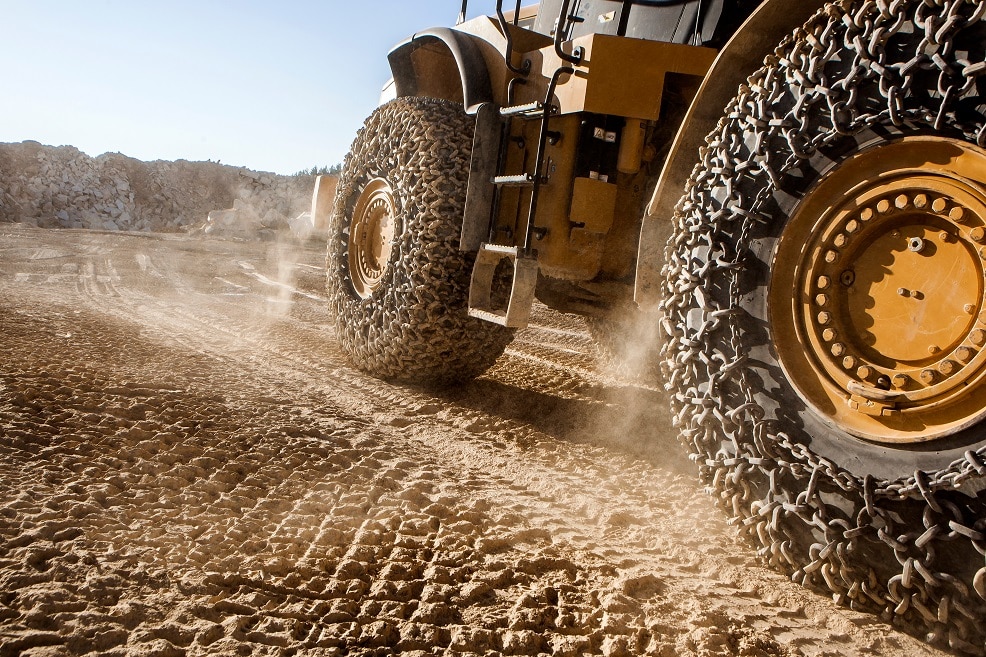Ask A TIRECRAFT Technician: How To Pick The Right OTR Tires For The Job
January 27, 2022
Tires

When conditions are rough and loads are high, you need to make sure you’ve got the right Off-the-Road (OTR) tires for the job—and your local TIRECRAFT can help.
Read on to learn how to pick the right OTR tires for your unique vehicle needs, or contact your local TIRECRAFT to begin a free OTR tire consultation with a certified specialist near you.
OTR Tire Basics: Are OTR Tires Right For You?
First thing’s first: Are OTR tires right for you? Some drivers confuse off the road with all-terrain, and there is a very big difference.
OTR tires are specially designed for use on heavy equipment and construction fleet vehicles, such as:
- Articulated or rigid dump trucks
- Loaders
- Reach stackers
- Bulldozers
- Front-end loaders
- Towing trucks
- Rubber tired gantry cranes (RTGs)
If you use any of these vehicle types in your operation, TIRECRAFT technicians can assist you with all questions and ultimately your ORT selection. Since 1990, we’ve been helping Canadians in the industries involving mining, aggregate, and construction achieve greater profitability and peace of mind with high-quality tires from top brands, including:
- Michelin OTR tires
- Bridgestone OTR tires
- Continental OTR tires
- Goodyear OTR tires, and more
But not all OTR tires are created equal. To learn how to make the right choice for your operation and unique vehicle type, you should be “fluent” in OTR sidewall markings, and we’re here to help. Continue reading, to learn how to make sense of sidewall specs for a better OTR tire shopping experience, or contact your local TIRECRAFT to start a free consultation straight away.
OTR Tire Sidewall Markings: Shop Smart At-A-Glance
Knowing how to read OTR tire sidewall markings speeds up the shopping process, allowing you to identify top candidates and rule out bad fits at-a-glance.
OTR tire sidewall markings will tell you:
- The manufacturer information, typically in the form of a brand name or logo, which will be displayed in a prominent, central position on the OTR tire sidewall.
- The nominal section width of the tire, also known as the “cross section width,” which is the total distance, measured in inches, from one sidewall to another. It is the first number listed in the OTR tire code. For example, if the OTR tire sidewall reads 29.5R25, then the nominal section width is 29.5 inches.
- The construction type, which will either be bias, belted, or radial, the latter being most popular in OTR tire applications due to the enhanced stability, longevity, and flexibility offered by parallel cord pattern construction. This information is represented as a single letter in the tire code. Using the example provided about (29.5R25), we are dealing with a radial tire construction.
- The rim diameter code, which is measured in inches, tells you whether the OTR tire will fit onto the rim of your construction fleet vehicle. This number appears after the Construction Type letter code—in the case of our example (29.5R25), the rim diameter code is 25.
- The star rating, which indicates the OTR tire load rating. If you have any questions about what star rating or load index/speed symbol is best for you, get in touch with your local TIRECRAFT technician.
- The load index and speed symbol, indicates how much weight a tire can safely carry at maximum air pressure, and the speed rating represents the maximum operating speed.
- The application type, which appears as a letter in the OTR tire code.
- “C” is for compactors;
- “G” is for graders;
- “E” is for earthmoving;
- “H” is for highway usage, such as mobile cranes; “IND” is for industrial applications, like reach stackers;
- “L” is for loaders and bulldozers.
- The type of use/tire category, which appears in the form of an easy-to-read pictogram- we all appreciate a pictorial reference when making our purchases. For example, OTR tires intended for loaders will have a symbol of a loader or a worker shoveling right on the sidewall—easy!
To Get More Help With Your OTR Tire Selection: Contact TIRECRAFT
Reading the sidewall is just one part of the OTR tire selection process. You will also need to choose the appropriate carcass strength, correct Tonne-Kilometres Per Hour (TKPH) or Ton-Miles Per Hour (TMPH) rating, and best fit for your budget.
These various details can seem daunting to first-time buyers, but your local TIRECRAFT is here to help. Use the find a TIRECRAFT tool to begin a free needs assessment and get a shortlist of personalized OTR tire recommendations, fast!
Back

